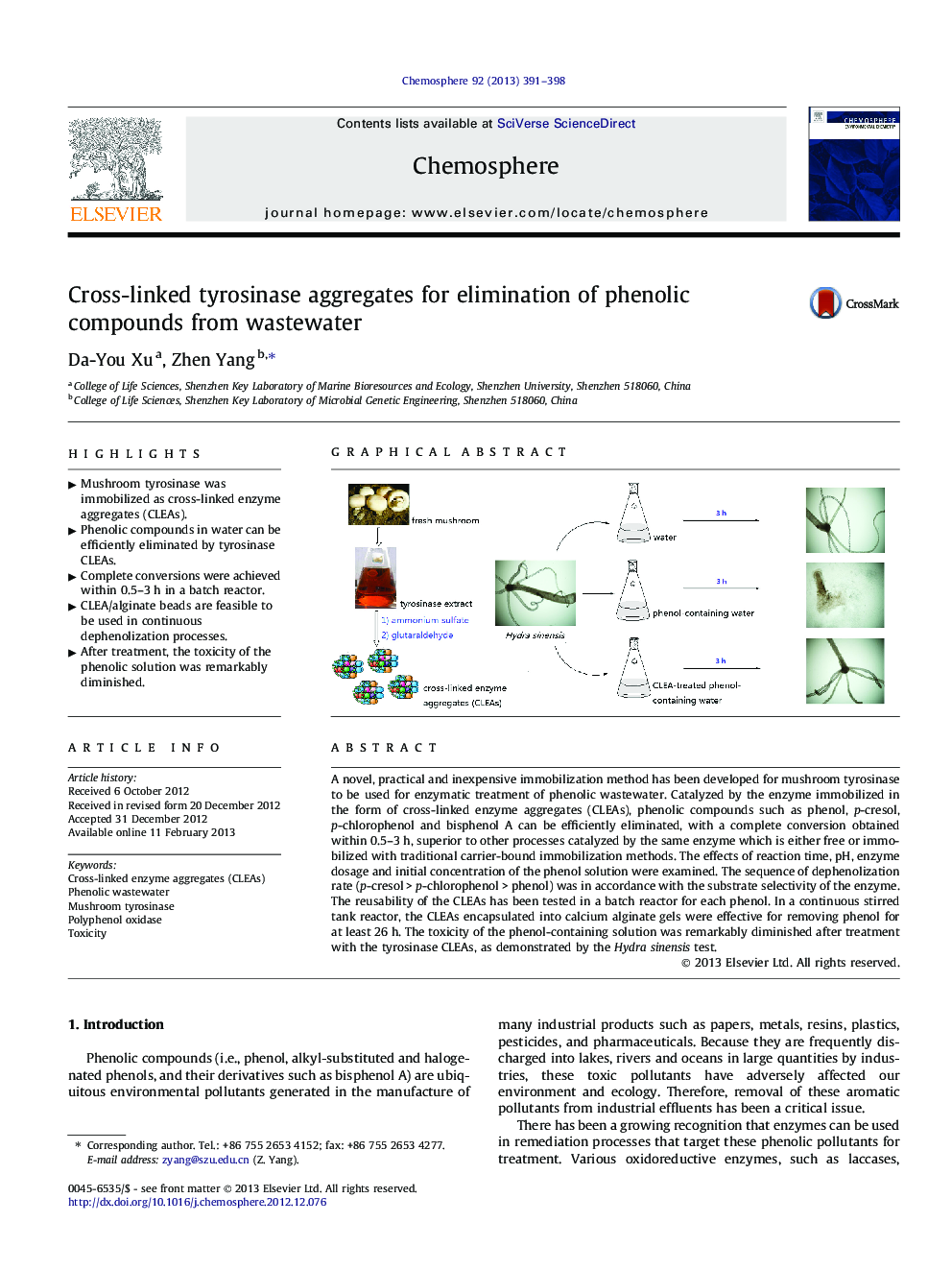| Article ID | Journal | Published Year | Pages | File Type |
|---|---|---|---|---|
| 6310401 | Chemosphere | 2013 | 8 Pages |
A novel, practical and inexpensive immobilization method has been developed for mushroom tyrosinase to be used for enzymatic treatment of phenolic wastewater. Catalyzed by the enzyme immobilized in the form of cross-linked enzyme aggregates (CLEAs), phenolic compounds such as phenol, p-cresol, p-chlorophenol and bisphenol A can be efficiently eliminated, with a complete conversion obtained within 0.5-3 h, superior to other processes catalyzed by the same enzyme which is either free or immobilized with traditional carrier-bound immobilization methods. The effects of reaction time, pH, enzyme dosage and initial concentration of the phenol solution were examined. The sequence of dephenolization rate (p-cresol > p-chlorophenol > phenol) was in accordance with the substrate selectivity of the enzyme. The reusability of the CLEAs has been tested in a batch reactor for each phenol. In a continuous stirred tank reactor, the CLEAs encapsulated into calcium alginate gels were effective for removing phenol for at least 26 h. The toxicity of the phenol-containing solution was remarkably diminished after treatment with the tyrosinase CLEAs, as demonstrated by the Hydra sinensis test.
Graphical abstractDownload full-size imageHighlights⺠Mushroom tyrosinase was immobilized as cross-linked enzyme aggregates (CLEAs). ⺠Phenolic compounds in water can be efficiently eliminated by tyrosinase CLEAs. ⺠Complete conversions were achieved within 0.5-3 h in a batch reactor. ⺠CLEA/alginate beads are feasible to be used in continuous dephenolization processes. ⺠After treatment, the toxicity of the phenolic solution was remarkably diminished.
